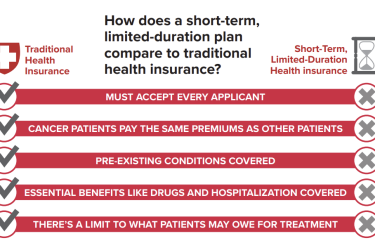 When reviewing just about any hospital bill today, it’s difficult to imagine that hospitals were founded to provide care for the poor. “Hospitals in the United States emerged from institutions, notably almshouses, that provided care and custody for the ailing poor,” says America’s Essential Hospitals, an association of hospitals and health systems dedicated to providing high-quality care for all, including the vulnerable. “Rooted in this tradition of charity, the public hospital traces its ancestry to the development of cities and community efforts to shelter and care for the chronically ill, deprived, and disabled.”
When reviewing just about any hospital bill today, it’s difficult to imagine that hospitals were founded to provide care for the poor. “Hospitals in the United States emerged from institutions, notably almshouses, that provided care and custody for the ailing poor,” says America’s Essential Hospitals, an association of hospitals and health systems dedicated to providing high-quality care for all, including the vulnerable. “Rooted in this tradition of charity, the public hospital traces its ancestry to the development of cities and community efforts to shelter and care for the chronically ill, deprived, and disabled.”
This history is significant because it’s at the heart of a four-part series of articles on how hospitals classify charity care and bad debt that Sean D. Hamill, reported and wrote for the Pittsburgh Post-Gazette. In an interview for a new How I did it piece about how he collected the data for this series, Hamill told me that hospitals want to say they provide charity care. But the series shows that on average, for-profit hospitals provide much less charity care then nonprofit hospitals. The series also shows that when a hospital operates as a nonprofit, it will provide charity care, but when it’s sold to a for-profit company, charity care often will drop off sharply. And, it shows how hospitals turn bad debt into charity care because then the hospital can take credit for providing charity care.
For this How I did it, Hamill explains how he collected data for his series, Counting Charity Care: How hospitals provide care to the uninsured, from a state agency in Pennsylvania and then used data from the federal Centers for Medicare & Medicaid Services to show what hospitals spend on charity care and bad debt.
On Saturday, April 14, at 3 p.m., Hamill will moderate a session at the Health Journalism 2018 conference in Phoenix, “How to evaluate hospital charity care and bad debt.” On the panel will be Dan Diamond, a reporter for Politico; and Susan Sherry, deputy director of Community Catalyst.
Hamill also invites other journalists to use the PPG numbers as needed. “Our data is open source,” he said. “Everyone could use it.”







